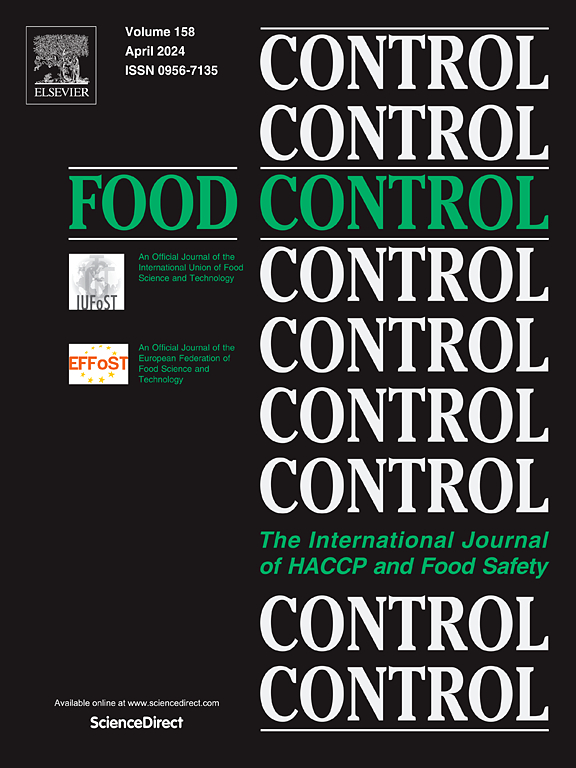Integrating HS-SPME-GCMS with chemometrics for identifying adulterated flaxseed oils and tracing origins of additives
IF 5.6
1区 农林科学
Q1 FOOD SCIENCE & TECHNOLOGY
引用次数: 0
Abstract
The widespread occurrence of adulteration in the flaxseed oil requires urgent and efficient methods for addressing oil adulteration. In this study, we proposed a new strategy for efficiently identifying adulterated flaxseed oil and tracing botanical origin of illegally added oils. A data analysis guided parameter optimization was designed for head space solid-phase microextraction. Volatile compounds were then analyzed with gas chromatography-mass spectrometry, whose data files were processed with our automatic untargeted data analysis software, AntDAS-GCMS. The flavor difference between pure flaxseed oil and the other types of oils like soybean oil, peanut oil, and rapeseed oil, were comprehensively studied. Finally, a two-stage classification strategy was conducted to identify the adulterated flaxseed oils and, meanwhile, tracing botanical origins of additives, which was accomplished by designing two independent partial least squares-discrimination (PLS-DA) models. Results indicated that the developed strategy can obtain an accuracy of 100 % for identifying adulterated flaxseed oils by the first PLS-DA in the first stage and another accuracy of 96.0 % for tracing botanical origins of added oils by the other PLS-DA in the second stage. In conclusion, the developed data analysis strategy may provide a new solution for oil adulteration.

将HS-SPME-GCMS与化学计量学相结合用于鉴别掺假亚麻籽油并追踪添加剂来源
亚麻籽油中普遍存在掺假现象,迫切需要有效的解决掺假问题的方法。在这项研究中,我们提出了一种新的策略来有效地识别掺假亚麻籽油和追踪非法添加油的植物来源。设计了以数据分析为指导的顶空固相微萃取工艺参数优化方法。挥发性化合物用气相色谱-质谱法分析,数据文件用我们的自动非靶向数据分析软件AntDAS-GCMS处理。对纯亚麻籽油与豆油、花生油、菜籽油等油的风味差异进行了全面研究。最后,通过设计两个独立的偏最小二乘判别(PLS-DA)模型,采用两阶段分类策略识别掺假亚麻籽油,同时追踪添加剂的植物来源。结果表明,所建立的策略在第一阶段用第一个PLS-DA鉴定掺假亚麻籽油的准确度为100%,在第二阶段用另一个PLS-DA鉴定添加油的植物来源的准确度为96.0%。综上所述,所开发的数据分析策略可能为油品掺假提供一种新的解决方案。
本文章由计算机程序翻译,如有差异,请以英文原文为准。
求助全文
约1分钟内获得全文
求助全文
来源期刊

Food Control
工程技术-食品科技
CiteScore
12.20
自引率
6.70%
发文量
758
审稿时长
33 days
期刊介绍:
Food Control is an international journal that provides essential information for those involved in food safety and process control.
Food Control covers the below areas that relate to food process control or to food safety of human foods:
• Microbial food safety and antimicrobial systems
• Mycotoxins
• Hazard analysis, HACCP and food safety objectives
• Risk assessment, including microbial and chemical hazards
• Quality assurance
• Good manufacturing practices
• Food process systems design and control
• Food Packaging technology and materials in contact with foods
• Rapid methods of analysis and detection, including sensor technology
• Codes of practice, legislation and international harmonization
• Consumer issues
• Education, training and research needs.
The scope of Food Control is comprehensive and includes original research papers, authoritative reviews, short communications, comment articles that report on new developments in food control, and position papers.
 求助内容:
求助内容: 应助结果提醒方式:
应助结果提醒方式:


